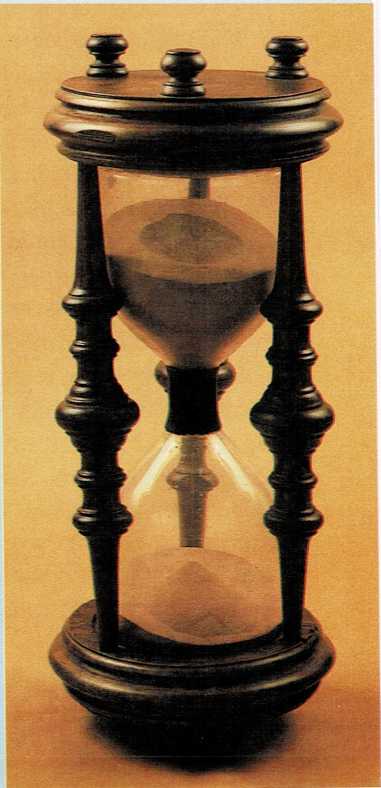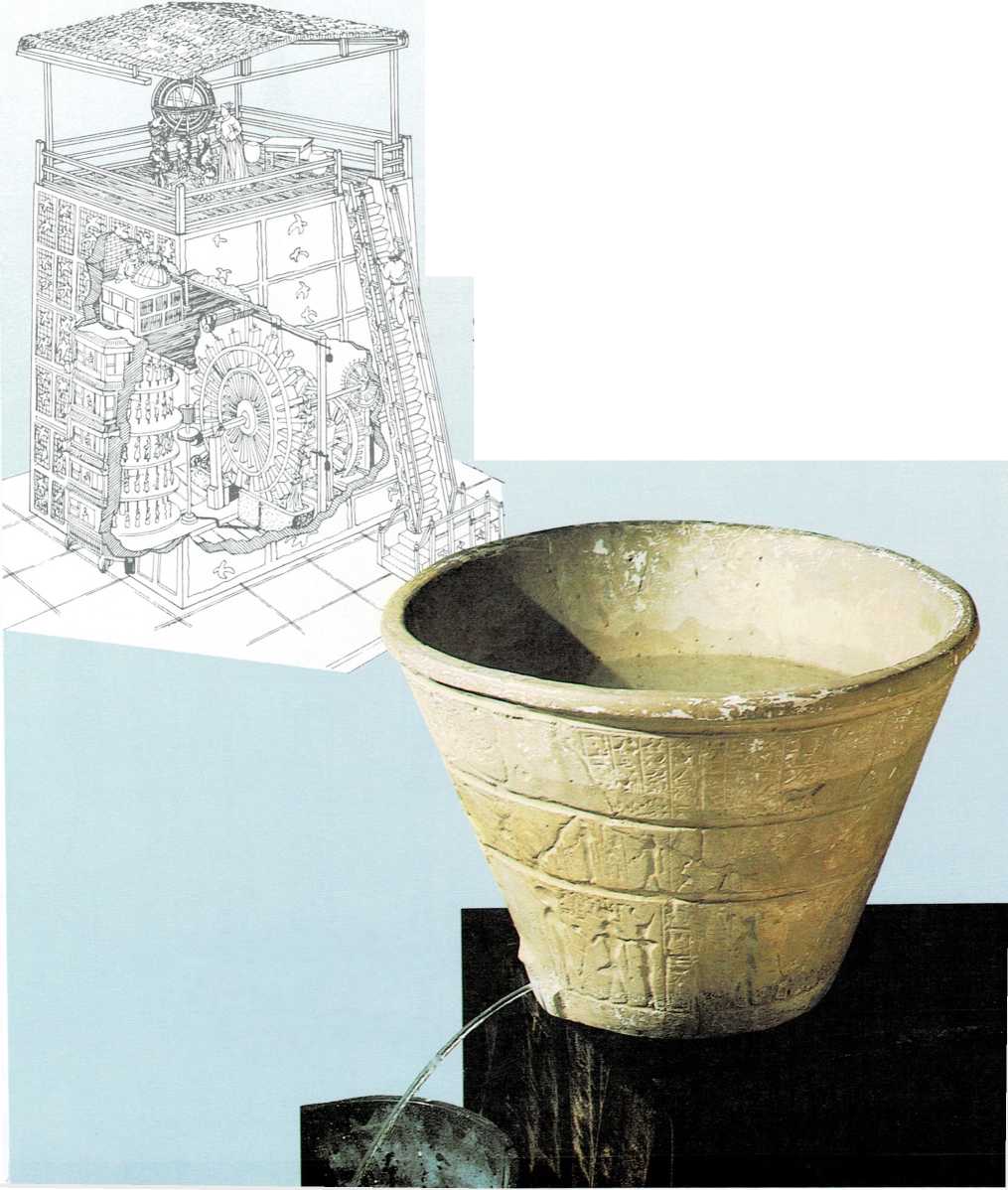Water clocks and sand clocks
Measuring time by the sun or the stars is all very well, but people soon
needed a better way. And this need led to the invention of the water
clock.
The first water clock was just a large clay or stone jar. Running down
the inside was a row of marks for the hours. Near the bottom of the jar
there was a tiny opening through which the water slowly leaked out. Of
course, the amount of water that leaked out, and the space between the
marks, had to be figured out very carefully. To tell the time, a person
looked into the jar to see which mark was at the top of the water.
Although people still used sundials, water clocks were a better way of
measuring time. Not only were the water clocks more accurate, but they
could be used both day and night, rain or shine. In time, people found
ways to make even better water clocks. They made water clocks that had
dials, like our clocks of today. They even had water clocks that would
ring a bell at the beginning of each hour.
But there were problems with water clocks just as there were with
sundials. For one thing, a water clock was liable to freeze in very cold
weather. For another thing, the hours marked off on water clocks were
never quite the same. An hour on one water clock might be longer or
shorter than an hour on another water clock. So people kept on looking
for better ways to measure time.
About twelve hundred years ago, people in Europe began to use sand
clocks, or what we 202

The sand in a sand clock is carefully measured to run out of the top
into the bottom in an exact amount of time, such as an hour, or even
twenty-four hours.
call hourglasses. An hourglass is two glass bulbs connected together by
a short, narrow tube. One of the bulbs is filled with fine sand, and the
sand slowly drains out of the top bulb into the bottom one. The amount
of sand is carefully measured so that it takes one hour to drain from
one bulb to the other.
A sand clock works both day and night, in any kind of weather. But it
only measures a given length of time, such as an hour or a half hour. It
can’t tell you what time it is.

Ancient Egyptians used this water clock about 3,300 years ago. The
water ran out of a hole in the bottom. As the water in the pot sank
lower, dots on the inside of the pot showed the hours. /.Chinese mathematicians built this marvelous water clock about nine
hundred years ago. European clockmakers may have gotten many ideas for
machinery from the Chinese.

